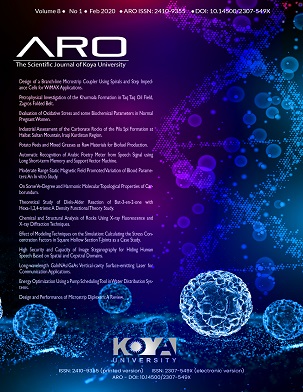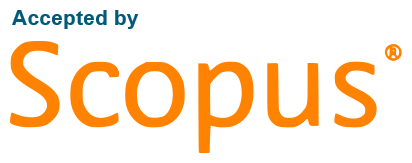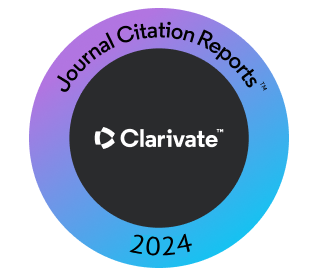Effect of Modeling Techniques on the Simulation: Calculating the Stress Concentration Factors in Square Hollow Section T-Joints as a Case Study
DOI:
https://doi.org/10.14500/aro.10585Keywords:
ANSYS Workbench, Face split, Modeling of materials, Stress concentration factor, Welding toeAbstract
The capability of the simulation software motivates the engineers to analyze the stress in complex welded joints where ordinary mathematical expression may lack. However, unfortunately, the simulations were interpreted mechanically without considering the simulation parameters deeply. For this reason, this research aims to study the effect of simulation parameters on the stress concentration factor of square hollow sections structures using ANSYS workbench. In this context, two main meshing techniques (face split vs. slicing) and various behavior of materials (linear vs. nonlinear) having been considered. The outputs of the investigations revealed the superiority of the materials nonlinearity over linear behavior in terms of results acceptability comparing to their corresponding real-life ones. For instance, the supercritical fluid of nonlinear plastic material estimated to be 14 which was closest to the 12 obtained experimentally by Mashiri et al. In addition to that, face split technique outperformed the slicing in terms of result accuracy and solving time. Solving the face split model elapsed 254 s only which is dramatically less than the minimum time (1605 s) of sliced models. This is because any slicing process will lead to the formation of the contact elements at interfaces and uncomfortable meshing which may in turn adversely effect on the simulation efficiency.
Downloads
References
Barrett, P. 2014. Stress Analysis Convergence Tips for Dummies. Available from: https://www.caeai.com/blog/stress-analysis-convergence-tips-dummies. [Last accessed on 2019 May 24].
Bhashyam, G.R. (2002) ANSYS Mechanical A Powerful Nonlinear Simulation Tool. ANSYS, Inc., Canonsburg, Pennsylvania.
Chattopadhyay, A., Glinka, G., El-Zein, M. and Qian, J. 2011. Stress analysis and fatigue of welded structures. Welding in the World, 55(0708), pp.1-21.
Chiew, S.P., Soh, C.K., Members, A.S.C. and Wu, N.W. 1999. Experimental and numerical stress analysis XT-joint. Journal of Structural Engineering, 125, pp.1239-1248.
Contact Formulation Theory. 2019. Available from: https://www.sharcnet.ca/Software/Ansys/16.2.3/en-us/help/wb_sim/ds_contact_theory .html#ds_form_pure_aug. [Last accessed on 2019 May 26].
Haupt, P. 1993. On the mathematical modeling of material behavior in continuum mechanics. Acta Mechanica, 100, pp.129-154.
Hobbacher, A. 2008. Recommendations for Fatigue Design of Welded Joints and Components. International Institute of Welding, Paris.
Koslpski, J. 2017. Speeding up Your Analysis Part 1. Available from: https://www.caeai.com/blog/speeding-your-analysis-%E2%80%93-part-1. [Last accessed on 2019 May 21].
Liu, Y.C. and Day, M.L. 2009. Concept modeling of tapered thin-walled tubes. Journal of Zheijang University Science A, 10(1), pp.44-53.
Mashiri, F.R., Zhao, X.L., Grundy, P. and Tong, L. 2002. Fatigue design of
welded very thin-walled SHS to-plate joints under in-plane bending. Thin Walled Structures, 40, pp.125-151.
Mashiri, F.R., Zhao, X.L., Hirt, M.A. and Nussbaumer, A. 2007. Size effect of welded thin walled tubular joints. International Journal of Structural Stability and Dynamics, 7(1), pp.101-127.
Neimi, E., Fricke, W. and Maddos, S. 2004. Structural Stress Approach to Fatigue Analysis of Welded Components Designer’s Guide. International Institute of Welding, Springer, Singapore.
Rizzo, C.M. and Codda, M. 2010. Application of the structural stress approach to a welded joint with complex geometry. Welding International, 24(5), pp.390-400.
Saini, D.S., Karmakar, D. and Chaudhuri, S. 2016. A review of stress
concentration factors in tubular and non-tubular joints for design of offshore installations. Journal of Ocean Engineering and Science, 1, pp.186-202.
Sinha, R., Liang, V.C., Paredis, C. and Khosla, P. 2000. Modeling and simulation methods for design of engineering systems. The ASME Journal of Computing and Information Science in Engineering, 1(1), pp.84-91.
Stupkiewicz, S. 2003. Augmented Lagrangian Formulation and Sensitivity Analysis of Contact Problems. VII International Conference on Computational Plasticity, Barcelona.
Tong, L., Xu, G., Yan, D. and Zhao, X.L. 2016. Fatigue tests and design of diamond bird- beak SHS T- joints under axial loading in brace. Journal of Construction Steel Research, 118, 49-59.
Wingerde, A.M. 1992. The fatigue behavior of T and X- joint made of square hollow sections. Heron, 37(2), pp.3-182.
Zhao, X.L., Herion, S., Packer, J.A., Puhtli, R.S., Sedlacek, G., Wardenier, J., Weynand, K., Wingerde, A.M. and Yeomans, N.F. 2001. Design Guide For Circular and Rectangular Hollow Section Welded Joints Under Fatigue Loading. TÜV-Verlag GmbH, Germany
Chiew, S.P., Soh, C.K., Members, A.S.C. and Wu, N.W. 2000. Experimental and numerical SCF studies of multiplanar tubular XX-joint. Journal of Structural Engineering, 126, pp.1331-1338.
Downloads
Published
How to Cite
Issue
Section
License
Authors who choose to publish their work with Aro agree to the following terms:
-
Authors retain the copyright to their work and grant the journal the right of first publication. The work is simultaneously licensed under a Creative Commons Attribution License [CC BY-NC-SA 4.0]. This license allows others to share the work with an acknowledgement of the work's authorship and initial publication in this journal.
-
Authors have the freedom to enter into separate agreements for the non-exclusive distribution of the journal's published version of the work. This includes options such as posting it to an institutional repository or publishing it in a book, as long as proper acknowledgement is given to its initial publication in this journal.
-
Authors are encouraged to share and post their work online, including in institutional repositories or on their personal websites, both prior to and during the submission process. This practice can lead to productive exchanges and increase the visibility and citation of the published work.
By agreeing to these terms, authors acknowledge the importance of open access and the benefits it brings to the scholarly community.
Accepted 2020-06-23
Published 2020-06-28
















 ARO Journal is a scientific, peer-reviewed, periodical, and diamond OAJ that has no APC or ASC.
ARO Journal is a scientific, peer-reviewed, periodical, and diamond OAJ that has no APC or ASC.